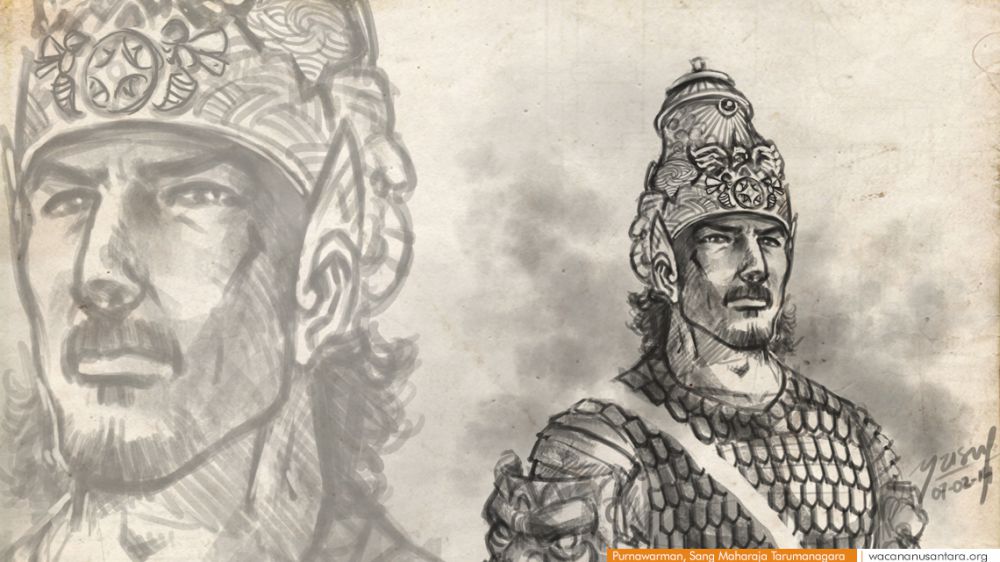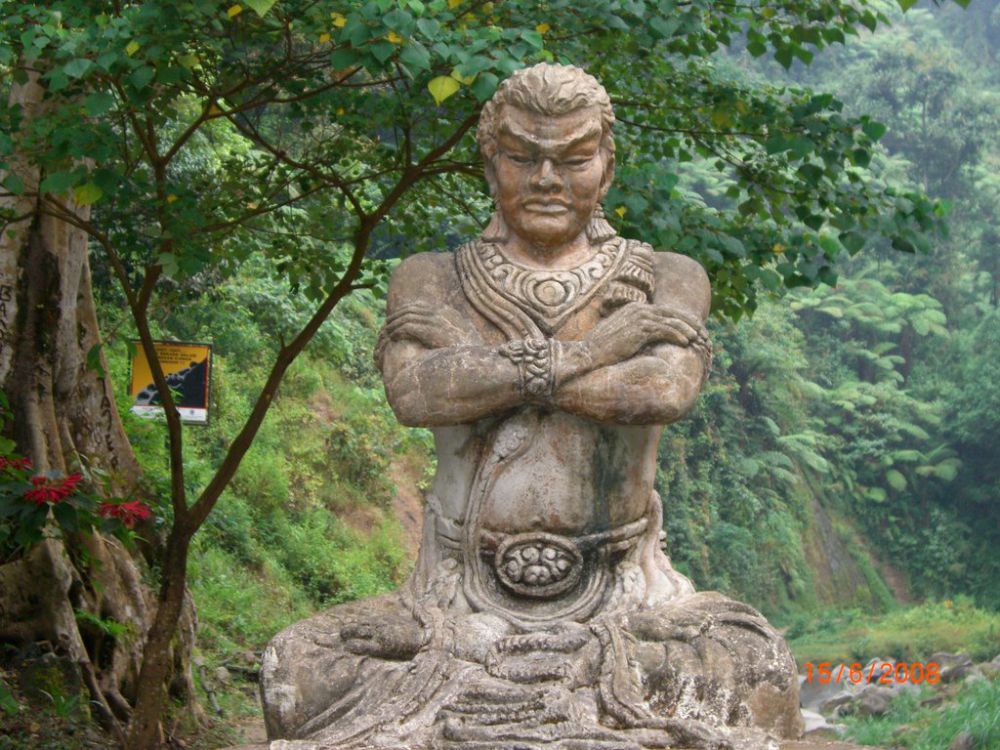The depiction of Purnawarman (Photo via Wacana)
Brilio.net/en - Way before Indonesias declaration of independence, most of the country's territories were divided into ancient kingdom that dominated and influenced the vast lands across the archipelago. And likekingdoms, in all of their grandeur and glory, wars were fought, cultures flourished, a trade system established, all of which contributed in the shaping of Indonesia's complex and intricate history. Follow along and find out their stories.
1. Purnawarman, the man behind the glory of Java's ancient kingdoms.

A sketch of Purnawarman (Photo via Wacana)

Purnawarman's footprints on Prasasti Ciaruteun (Photo via JagoSejarah)
Sri Maharaja Purnawarman was a great king of the 4th-centuryTarumanegara Kingdom in West Java. Fierce and agile on the battlefield while intelligent and innovative as a ruler, it was under Purnawarman's reign that Tarumanegaraenjoyed its peak as a prosperous kingdom with a strong military force. His footprints can be seen today in Bogor, West Java, printed in a stone known as Prasasti Ciaruteun. Along with the preserved footprints, the stone also come swith a short Sanskirt text that reads:This is a pair of foot like the feet of Wisnu (the Caretaker). It is the glorious footprints of Purnawarman, the great king of the land of Taruma, the brave king ofthe world.
2. Samaratungga, the mighty ruler behind the great Borobudur Temple.

Borobudur Temple - the masterpiece from Samaratungga era (Photo via javaexotictour)
Also known as Sri Maharaja Samarottungga of the Syailendra dynasty, King Samaratungga was the ruler of 8th- and the 9th-century Kingdom of Sriwijaya in Sumatra. A rich and developed kingdom with strong naval forces, their territory runs across Sumatra, Java, Malayan Peninsula, and the southern part of modern day Thailand. During his reign, Samaratungga initiated the construction of a massive masterwork or what we know today asBorobudur Temple in Magelang, Central Java, completed circa 825 AD. It is by far the largest Buddhist temple standing in the world.
3. Jayabaya, whose prophecies defined history.

Prabu Jayabaya (Photo via ruanasagita)
Prabu (King) Jayabaya was the ruler of 12th-century Kingdom of Kediri. He is most famous for the making prophesies that are later on believed to have come true, including that time he foresaw the arrival of "pale-skinned people", which is believed to refer to the invasion of countryby the Dutch that lasted more than 300 years.He is also said to have prophesied on technological advancements such as "horseless carriages" -- cars -- and "ships sailing in the sky" -- airplanes, as well as on the issues such as global warming, the presidents of Indonesia, some of which is believed to be true.
4. Tribuwana Tunggadewi, the first queen of the mightiest kingdom in Java.

4 Statue of Parvati - depicting Tribuwana Tunggadewi (Photo via wikimedia)
Queen Tribuwana Tunggadewi was the third ruler of 14th-century Majapahit Empire in East Java and is the first known female ruler in the history of Indonesia's ancient kingdoms.
With the help of prime ministerMahapatih Gajah Mada, Tribuwana Tunggadewi'sMajapahitentered its first age of major expansion, conquering Pejeg Kingdom, Dalem Bedahulu, and eventually all of Bali, whileAdityawarman, a cousin anda trusted aide ofthe Queen, helped conquerSriwijaya Kingdom and the Malayan Kingdom in Sumatra.

Gajah Mada statue at Probolinggo (Photo via Panoramio)
5. Hayam Wuruk, a "rooster" who united the archipelago.

The depiction of Hayam Wuruk (Photo via Wacana)

Hayam Wuruk's Ulun Umbul crown (Photo via Wikimedia)
Hayam Wuruk (meaning "the intelligent rooster") is also known as Maharaja Sri Rajasanagara and wasthe fourth king of 14th-century Majapahit Empire in East Java, taking the throne from Queen Tribuwana Tunggadewi. Mahapatih Gajah Mada stood by Hayam Wuruk's side during his time as ruler, as he had during his mother's reign, conquering theKingdom of Pasai and destroying thelast fortresses of Sriwijaya. It was during this time that Majapahit'sterritory expanded to the entire islands of Java, Sumatra, the Malayan Peninsula, Kalimantan, Sulawesi, the islands of Nusa Tenggara, Maluku, Papua, Tumasik (Singapore), as well as parts of modern-day the Philippines.
CLICK NEXT TO SEE THE FINALKING!
(brl/red)